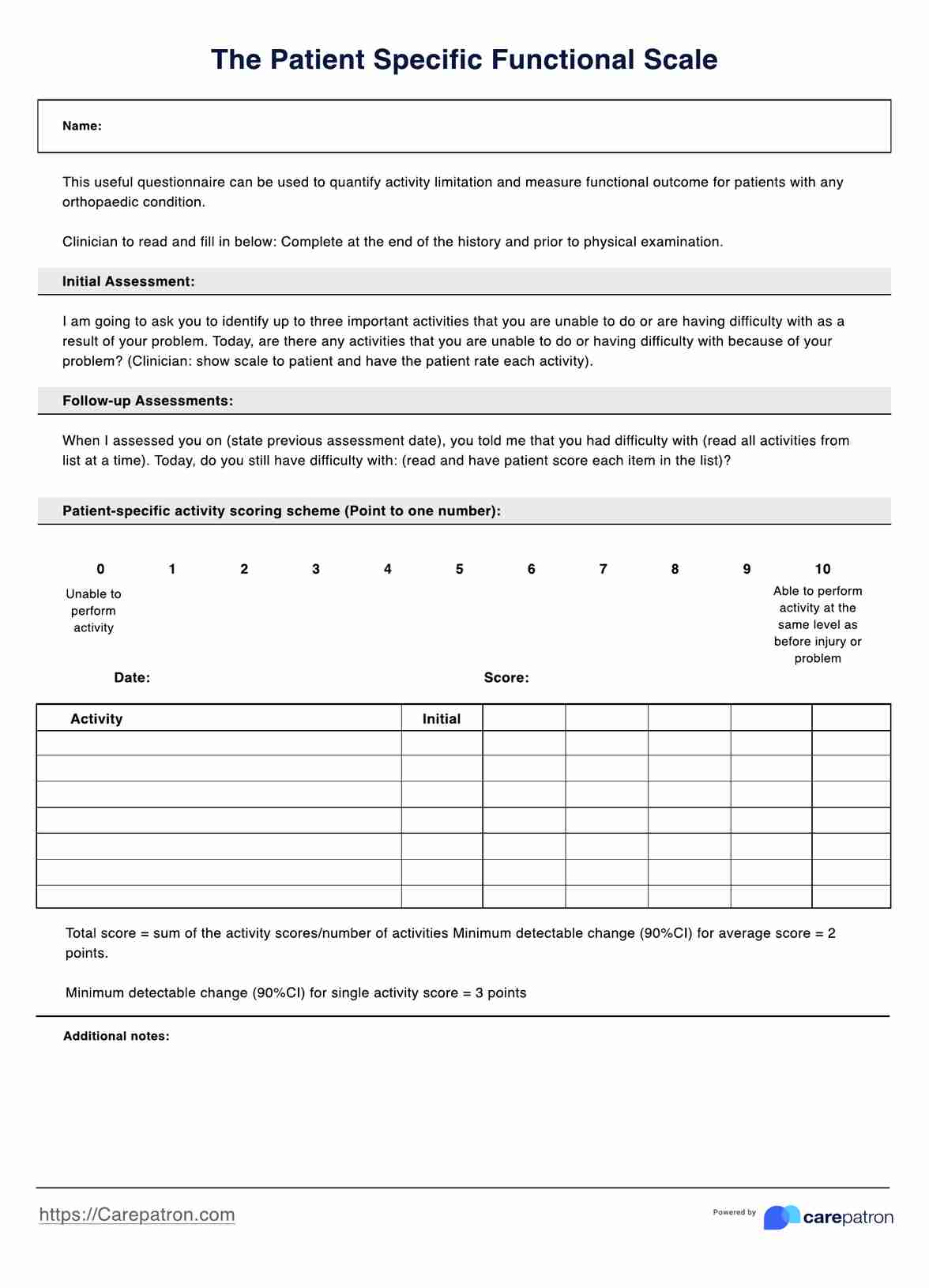The Patient Specific Functional Scale measures a patient's ability to perform everyday activities such as walking, climbing stairs, turning in bed, and more.

Patient Specific Functional Scale
Read about Patient Specific Functional Scale (PSFS) and understand its use. Download a free PDF template and example for your own use.
Use Template
Patient Specific Functional Scale Template
Commonly asked questions
The PSFS aims to provide insights into a patient's functional abilities and help healthcare professionals develop more effective rehabilitation plans.
The PSFS is most commonly used by physical therapists, occupational therapists, and other healthcare professionals to help assess a patient's physical function. It can be used both in the clinic and during a home visit.
EHR and practice management software
Get started for free
*No credit card required
Free
$0/usd
Unlimited clients
Telehealth
1GB of storage
Client portal text
Automated billing and online payments











